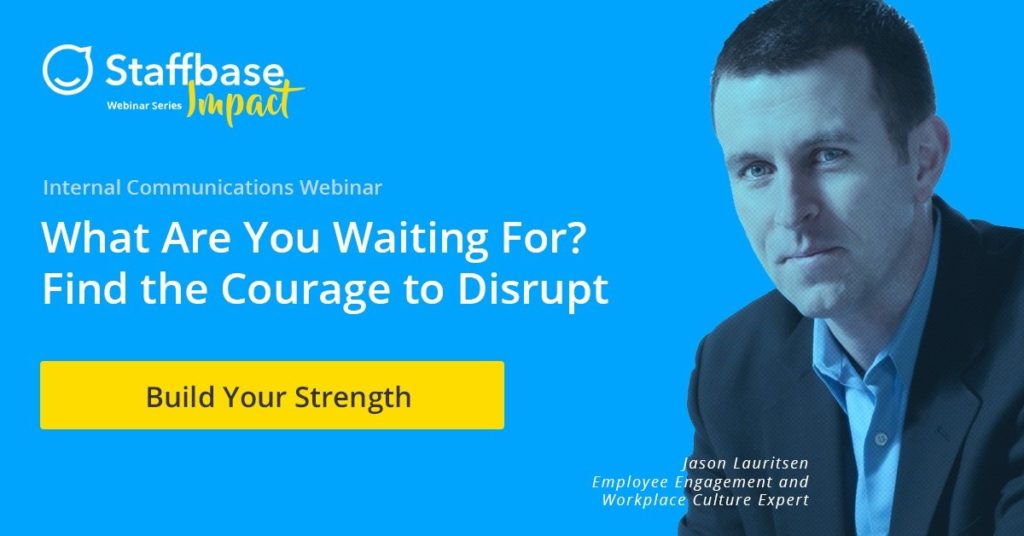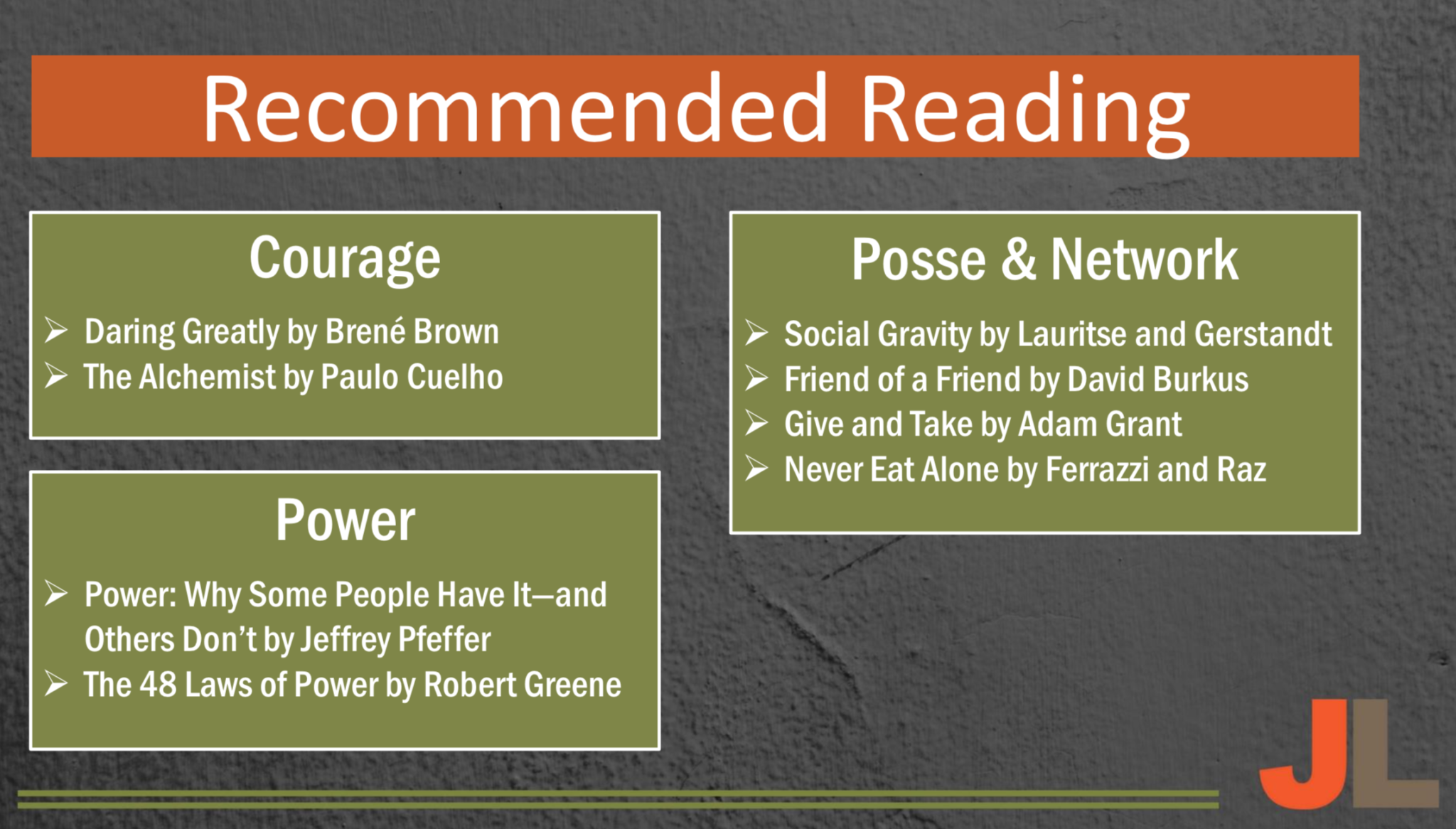
If you’re stuck in a rut and playing it safe at work, here’s why you need to act now and move forward to make change happen via internal communication. According to author and workplace culture expert Jason Lauritsen, “Safe never changed anything.”
We’re constantly on the search to help communication professionals find solutions to common workplace challenges. That’s why we’ve partnered with renowned expert Jason Lauritsen to address change at work so that you can muster the courage to lead your workforce during times of transition. Be brave, and read along below for a quick recap of everything that you missed.
Finding Your Power:
According to Lauritsen, the ability to make change at work is often an easy fix when you’re willing to take the first step. For him, a simple nudge from a friend inspired him to “fix” his current situation by sitting down for an immediate one-on-one conversation with his supervisor. He says that this conversation changed everything and improved the way he worked with his team, so he asked participants to consider this question to find the power within to make a difference.
How do we find the guts in those moments to do the things that we’re afraid of, or that might not be the most fun things to do?”
Create a Disruption:
Lauritsen says that “disruption” is a trendy discussion topic and is often associated with a catalyst such as a great idea, new insight, or new technology. Nevertheless, he doesn’t buy it. He says that the lack of disruption at work isn’t due to a lack of ideas or knowledge. He believes there’s a gap between knowing what to do and actually being able to make it happen.

I think that to understand disruption, we have to step back and recognize that any time we’re talking about change or disruptive change we have to know that there’s going to be resistance. There’s going to be pushback. Regardless of how good of an idea we have, regardless of whether it’s the right idea even, any time we’re pushing for change or pushing forward a solution it could still fail, right? There’s a lot of things outside of our control, so there’s no guarantee in success. And because of all of these things, talking about change feels risky. And any time something feels risky there’s a human emotion that pops up that is problematic for all of us, and that’s fear.”

See how Innovative Professionals Make Change at Work
Safety is Scary:

Lauritsen explains that when people feel like they’re in danger, whether it’s real or perceived, our brains send out a signal to our body that tells it to get to safety immediately, triggering feelings of anxiety. Lauritsen says that those moments prompt people to ask themselves “What if” questions that increase self-doubt and keep them from moving forward.
Lauritsen continues that if you want to drive positive change and disruption to be the spark in an organization, you have to be able to move and push past the fear of “What if” questions, which requires tremendous courage. He says that fear is a sign that you are doing something important that matters. Although Lauritsen believes that courage is likely innate, he says that everyone can reduce it by learning how to mange their relationship with fear.
Confidence, Preparation, and Power:
Through his son’s service as a United States Marine, Lauritsen has learned the importance of confidence in achieving one’s individual goal of conquering fear. He’s also recognized the critical need to be well prepared prior to moving forward during times of change.
“Preparation is key. It helps to feel more confident and ensures that you have the right tools.”
Lauritsen is also interested in the concept of power and our complicated relationship with the idea of acquiring power for forces of good. He prefers the definition of power from Jeffrey Pfeffer, a well-known author and academic who has many opinions on the topic. Pfeffer says that power is “the potential ability to influence behavior to change the course of events, to overcome resistance, and to get people to do things they otherwise would not do.” According to Lauritsen, this definition sounds like a job description for internal communication or HR, because both are in the business of influencing behavior, changing things, and trying to make things better by overcoming resistance and achieving power for the greater good.
Lauritsen says that power often stems from traits that you already have including:
- Professional title
- Individual stamina
- Communication skills
- Expertise
- Personal network
- Access to information
- Tolerance for conflict
- Ability to focus
- Empathy
- Professionalism
Lauritsen wrapped up the webinar by giving participants homework to consider their individual superpowers and how they can tap into them to drive change and make things happen at work. He also asked them to think about where they might develop more power to get things done. Then, he told them to keep these three questions in mind each time they’re afraid to disrupt.
- “What’s the worst thing that can happen if I take action in this case, whether it’s in business or conversation?
- “Is there real evidence that any of these things actually happened?”
- “What’s most likely to happen? What’s the most likely worst case scenario?”
Then, Lauritsen closed by saying that practice, preparation, and gathering a posse of support are the necessary tools for anyone who wants to be successful at work and in life.
“You can find your way to more courage, to be more disruptive, to have a bigger impact, by changing your relationship with fear, by taking control of fear and not letting fear control you…”
Jason Lauritsen’s Recommended Reading List

Read more about employee communication best practises:
- 7 Reasons Why Internal Communications Is Important for Success
- Internal Communication: You Need to Plan a Better Strategy for 2021
- Internal communications Software: What’s Best?
- Employee Communication Apps: 10 Benefits of a Mobile Comms Platform
- Why companies choose Staffbase as their employee communications platform




